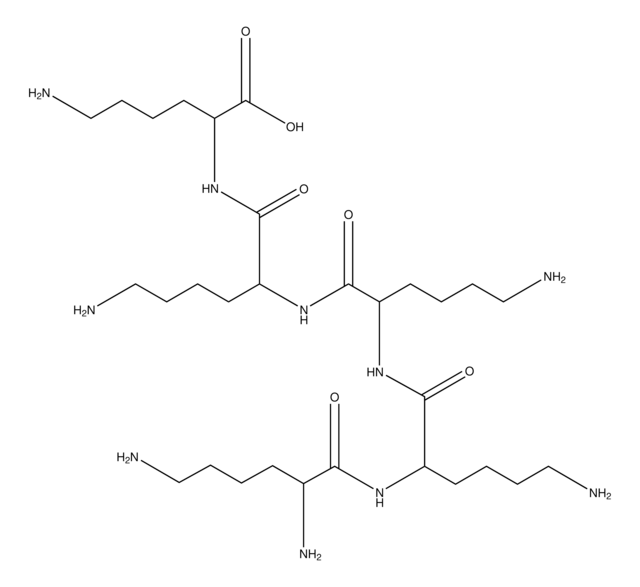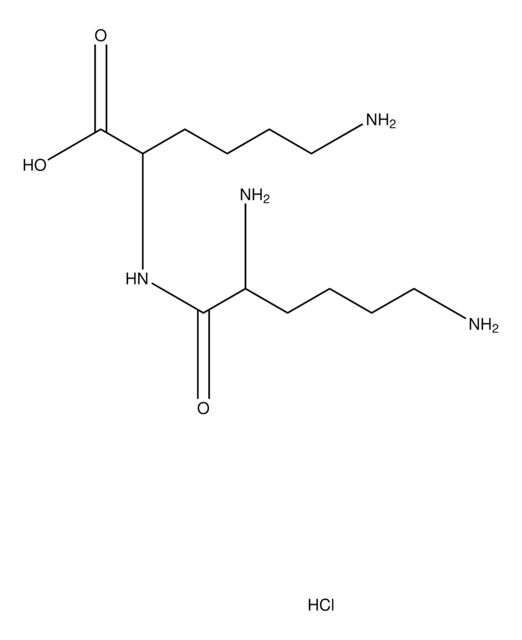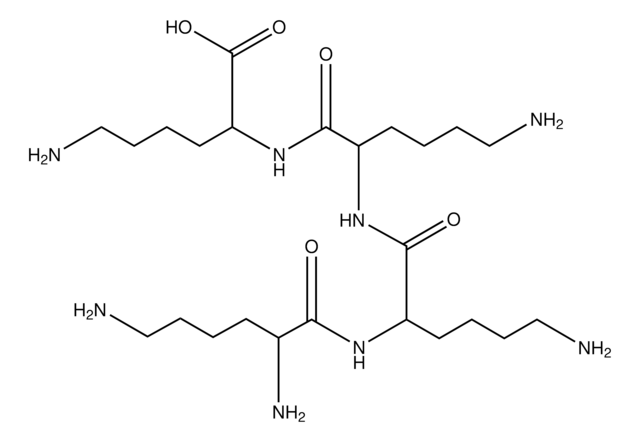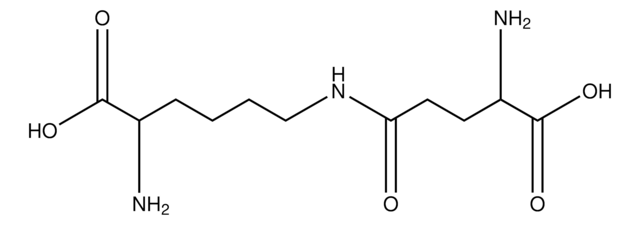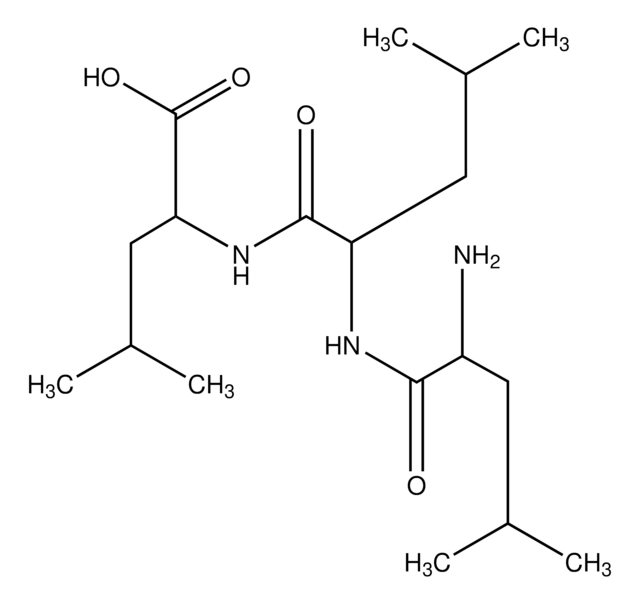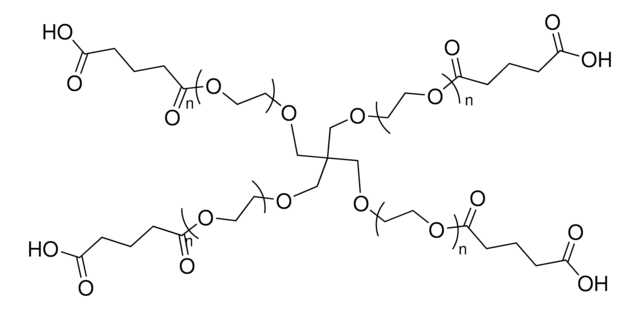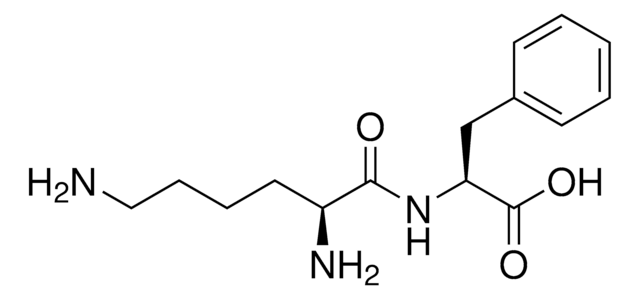All Photos(1)
About This Item
Empirical Formula (Hill Notation):
C18H38N6O4
CAS Number:
Molecular Weight:
402.53
MDL number:
UNSPSC Code:
12352209
PubChem Substance ID:
NACRES:
NA.26
Recommended Products
Product Name
Lys-Lys-Lys, ≥97% (TLC)
Quality Level
Assay
≥97% (TLC)
form
powder
composition
Peptide content, ~60%
color
white to off-white
storage temp.
−20°C
SMILES string
NCCCCC(N)C(=O)NC(CCCCN)C(=O)NC(CCCCN)C(O)=O
InChI
1S/C18H38N6O4/c19-10-4-1-7-13(22)16(25)23-14(8-2-5-11-20)17(26)24-15(18(27)28)9-3-6-12-21/h13-15H,1-12,19-22H2,(H,23,25)(H,24,26)(H,27,28)
InChI key
WBSCNDJQPKSPII-UHFFFAOYSA-N
Amino Acid Sequence
Lys-Lys-Lys
Application
Short poly-L-lysines polypeptides such as trilysine (tri-L-lysine, lys3); tetralysine (tetra-L-lysine, lys4) and pentalysine (penta-L-lysine, lys5) are cationic moieties that may be used in the construction of gene delivery vectors and DNA nanoparticles.
Packaging
Bottomless glass bottle. Contents are inside inserted fused cone.
Storage Class Code
11 - Combustible Solids
WGK
WGK 3
Flash Point(F)
Not applicable
Flash Point(C)
Not applicable
Personal Protective Equipment
dust mask type N95 (US), Eyeshields, Gloves
Choose from one of the most recent versions:
Already Own This Product?
Find documentation for the products that you have recently purchased in the Document Library.
Peter G Millili et al.
Microscopy research and technique, 73(9), 866-877 (2010-03-17)
Polycationic polymers have been used to condense therapeutic DNA into submicron particles, offering protection from shear-induced or enzymatic degradation. However, the spontaneous nature of this self-assembly process gives rise to the formation of multimolecular aggregates, resulting in significant polyplex heterogeneity.
Aboli A Rane et al.
PloS one, 6(6), e21571-e21571 (2011-07-07)
Several injectable materials have been shown to preserve or improve cardiac function as well as prevent or slow left ventricular (LV) remodeling post-myocardial infarction (MI). However, it is unclear as to whether it is the structural support or the bioactivity
Sandrine Perrier et al.
Journal of the American Chemical Society, 128(17), 5703-5710 (2006-04-28)
Formation of DNA-protein cross-links involving the initial formation of a guanine radical cation was investigated. For this purpose, riboflavin-mediated photosensitization of a TGT oligonucleotide in aerated aqueous solution in the presence of the KKK tripeptide was performed. We have shown
Yudan Ma et al.
Chemistry (Weinheim an der Bergstrasse, Germany), 15(47), 13135-13140 (2009-10-27)
Single-strand oligo-DNA-modified Au nanoparticles (AuNPs) undergo aggregation in the presence of poly(L-lysine) (PLL), which is attributed to the interactions between the oligo-DNA and PLL. These interactions between the oligo-DNA and PLL were identified to be electrostatic when the lysine residues
Ignác Capek
Advances in colloid and interface science, 163(2), 123-143 (2011-03-09)
Many biomolecules have specific binding properties in the nanostructure formation; they are attractive materials for nanotechnology. One such promising construction material for growing a well-defined nanostructure is deoxyribonucleic acid, due to its π-electron hydrophobic core and predictable recognition attributed to
Our team of scientists has experience in all areas of research including Life Science, Material Science, Chemical Synthesis, Chromatography, Analytical and many others.
Contact Technical Service